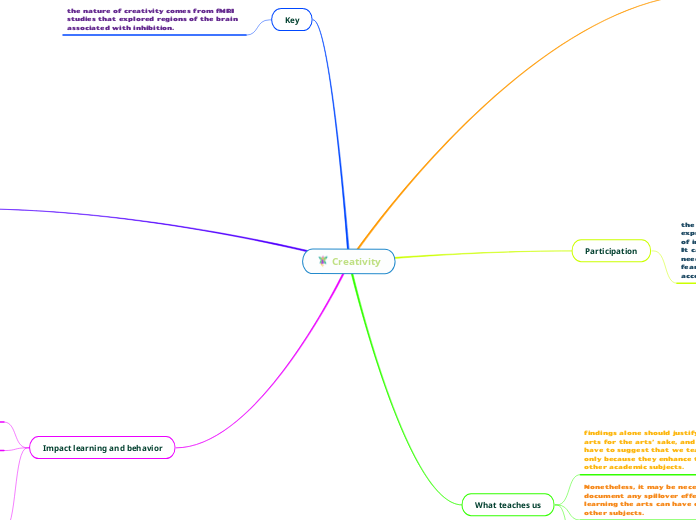
he ability to use divergent thinking to probe deeply, and to find alternative solutions to a problem that were not previously considered
the arts can foster spontaneity and self-expression, moderate the limiting effects of inhibition, and lead to creative results. It can develop the attentional control needed for persistence to overcome the fear, frustration, and failure that can accompany creative endeavors.
findings alone should justify teaching the arts for the arts’ sake, and one should not have to suggest that we teach the arts only because they enhance the learning of other academic subjects.
Nonetheless, it may be necessary to document any spillover effects that learning the arts can have on learning other subjects.
That is because of the risk that the arts will fall by the wayside as schools are held more accountable for improving achievement in language arts and mathematics, despite strong public support for arts programs.
the nature of creativity comes from fMRI studies that explored regions of the brain associated with inhibition.
The fMRIs taken during the improvisation revealed that the areas of the brain responsible for inhibition and self-regulation.
Were much less activated than during the memorized performance, but activity increased in the brain areas associated with individuality and self-expression
Researchers speculate that arts integration causes both students and teachers to rethink how they view the arts and generates conditions that educational researchers and cognitive scientists say are ideal for learning.
The arts are not just expressive and affective; they are deeply cognitive.
They develop essential thinking tools: pattern recognition and development; mental representations of what is observed or imagined; symbolic, allegorical, and metaphorical representations; careful observation of the world; and abstraction from complexity